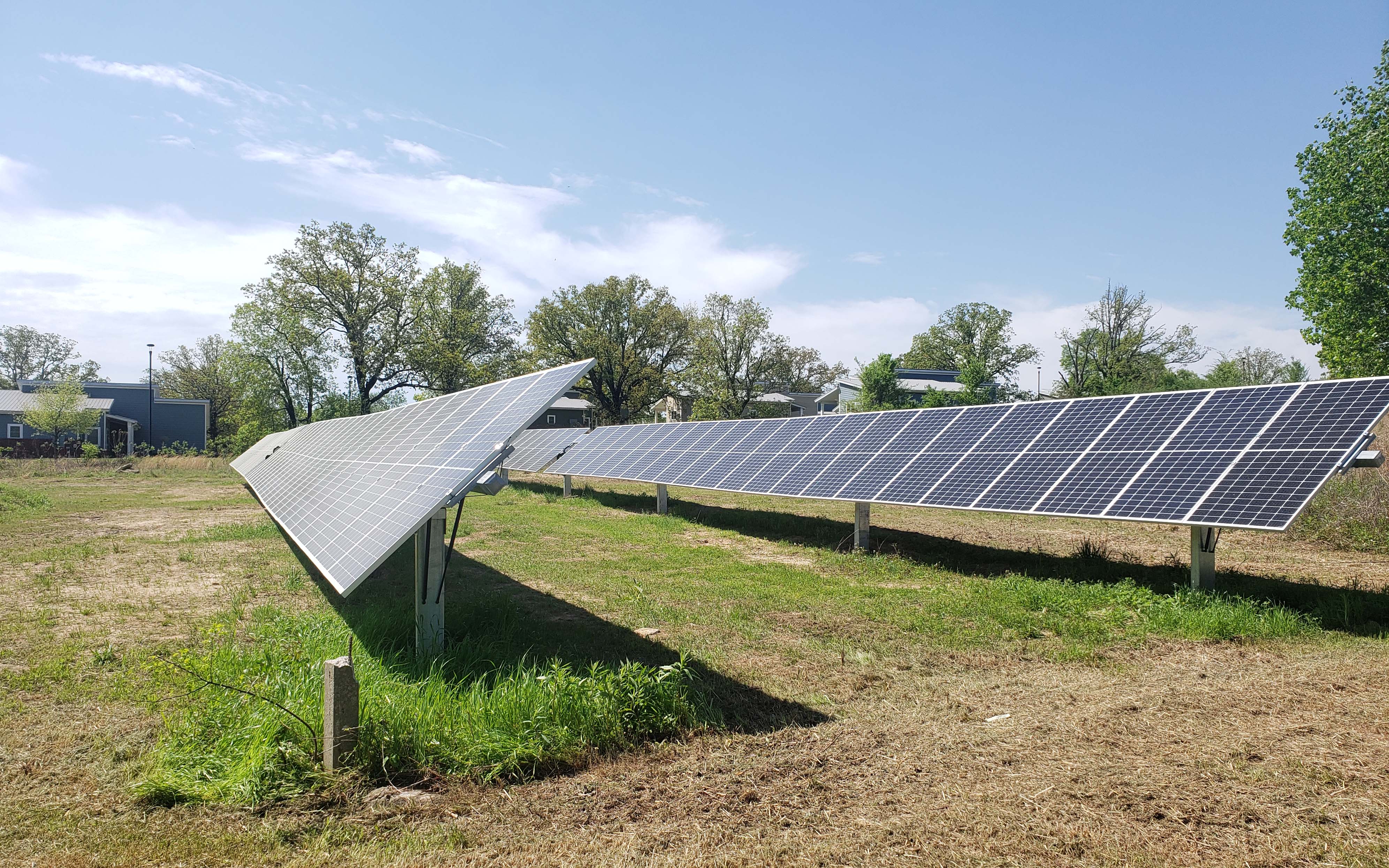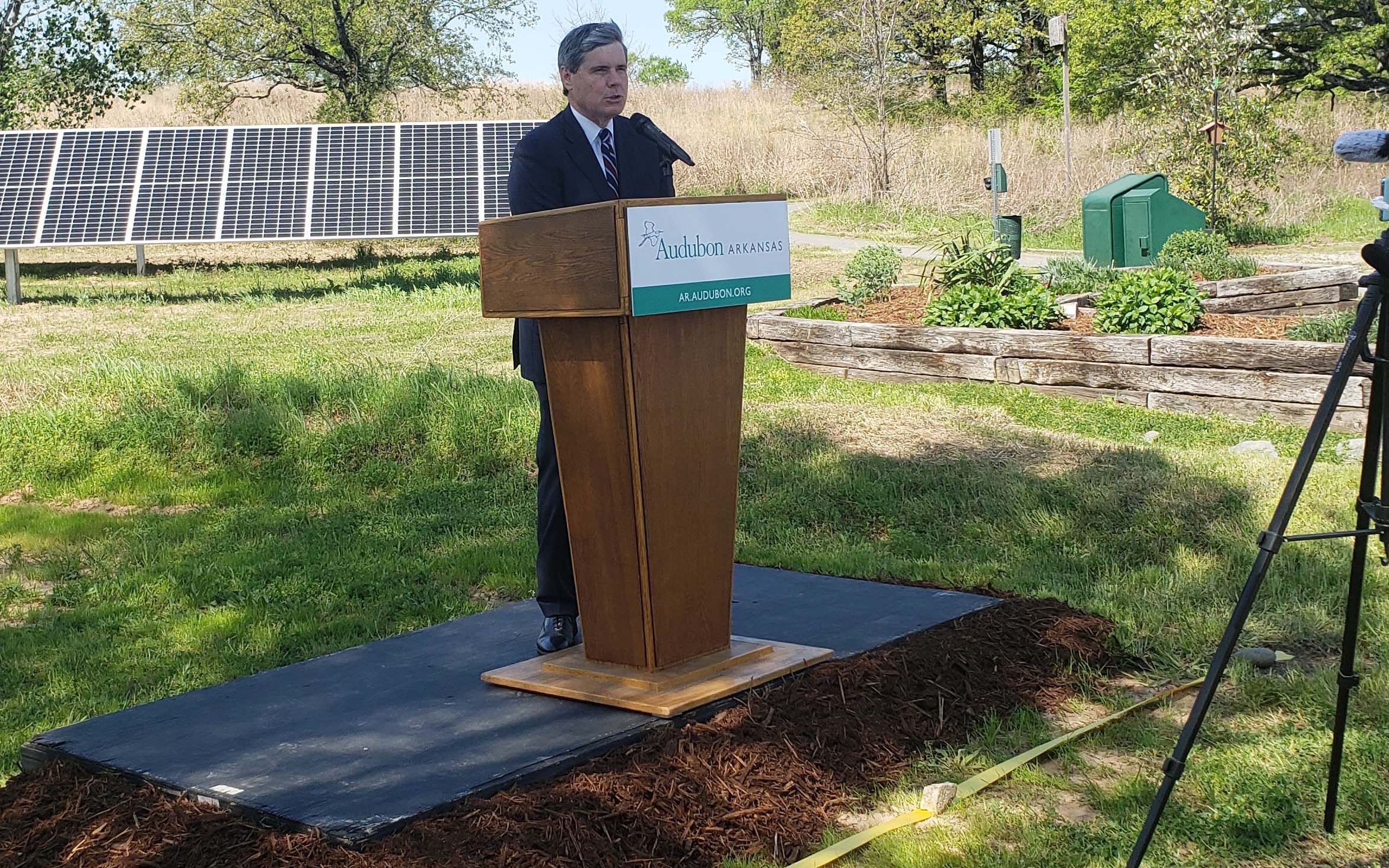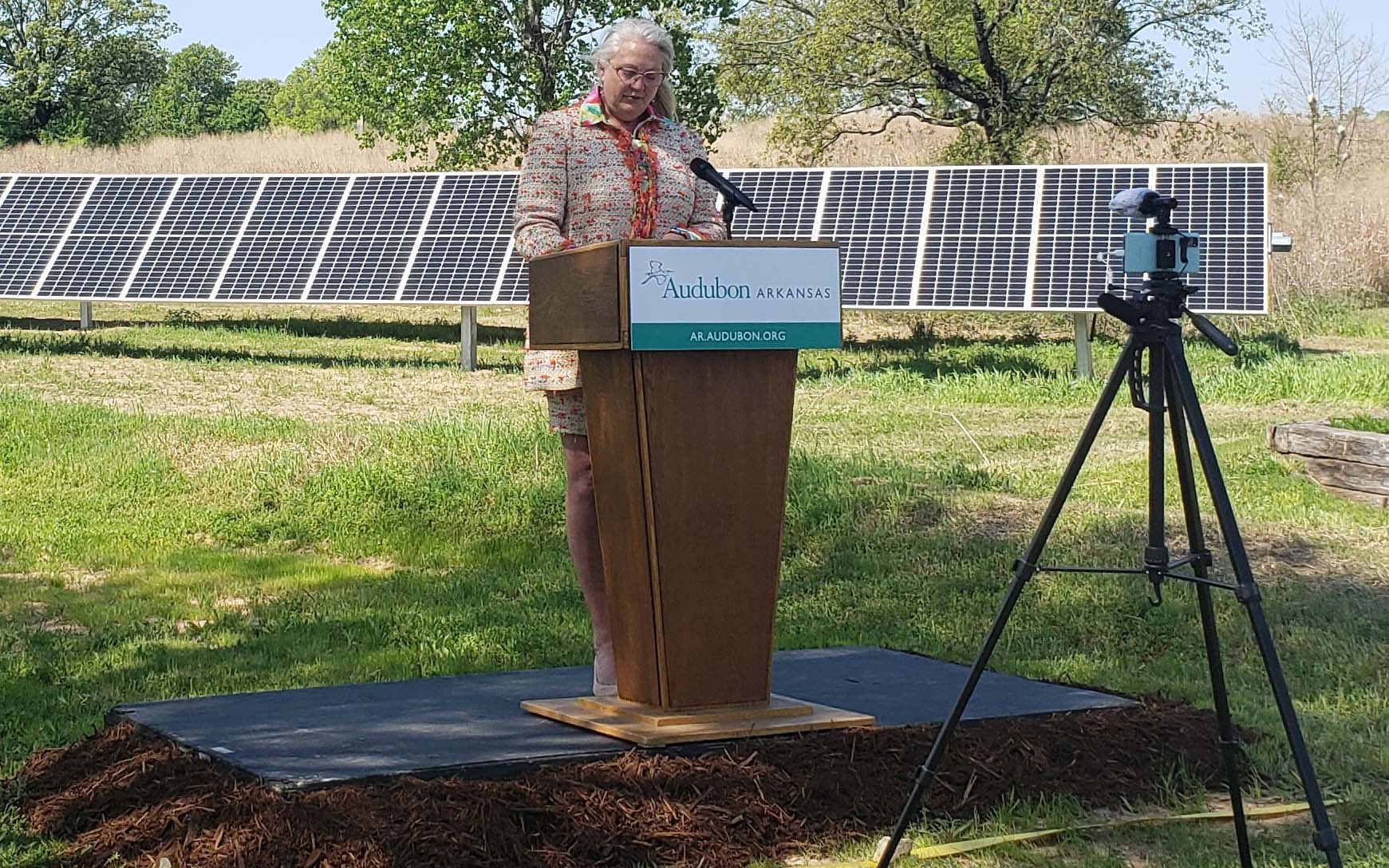Little Rock Audubon Center fetes new solar array project
April 19-25, 2021
By Wesley Brown
The Arkansas chapter of the National Audubon Society held a ribbon-cutting ceremony on Tuesday (April 13) to spotlight the conservation group’s distinction as the state’s first 100% renewable energy-powered nonprofit organization.
The Little Rock Audubon Center (LRAC) in the city’s Granite Mountain community is now home to a new 35-kilowatt solar power plant constructed by North Little Rock-based Scenic Hill Solar. The solar array is designed to meet the center’s total electricity demand and will feature a Solar Learning Lab to provide community education opportunities on solar power technology.
During the morning ceremony just south of downtown Little Rock, the local Audubon chapter and Scenic Hill Solar CEO Bill Halter described the new solar energy project as the culmination of legislation enacted during the 2019 session that has bolstered dozens of similar developments statewide.
The new law, now known as the Solar Access Act of 2019, was sponsored by Sen. Dave Wallace, R-Leachville, and signed by Gov. Asa Hutchinson nearly two years ago. The original legislation was amended several times following long debate and tedious negotiations by Arkansas lawmakers, energy regulators, and renewable and clean energy advocates during the 82nd General Assembly.
Among many things, the new law opened the doors for third-party financing of solar systems for municipalities and other nonprofits that have led dozens of announced developments in Arkansas over the past 18 months. The new solar-powered legislation also allowed the Arkansas Public Service Commission (PSC) to move forward with the final phase of regulatory proceedings for the state’s net metering rules.
Net metering applies to small, distributed generation systems such as solar and other renewable technologies that can allow owners to receive credit for excess electricity produced on-site. After four years of studying the issue, the PSC announced the state’s new net metering rules regarding solar development on June 1, 2020. The new rules established net-metering rates, terms and conditions in Arkansas and implemented the provisions of Act 464.
“This project is the manifestation of a tremendous amount of work at State Capitol of Arkansas, passing and fashioning legislation that makes projects like this possible,” said Halter, the state’s former lieutenant governor who served from 2007 to 2011. “It is literally the case, without the passage of Act 464 two years ago, projects like this and other projects across Arkansas would not exist today.”
Halter, whose North Little Rock company has completed 15 similar solar-energy projects across the state and has at least a dozen more in the pipeline, said the floodgates have opened for municipal and public solar projects in every corner of the state. Those projects, he said, have created hundreds of new renewable energy jobs and over $250 million in economic development investments.
“The consequence of this for the state has been profound in a every short period of time,” he said. “Literally, everywhere from Blytheville in the Northeast down to Texarkana and Hope in the Southwest. From Arkansas County in the Southeast up to Benton and Washington Counties in the Northwest and all places in between. So, when you look behind and you see this power plant. Just imagine that there are literally multiples of this going all around the state of Arkansas.”
Besides Halter, local Audubon officials also explained during the hourlong socially distanced media event that the local solar project will change the operations at the conservation group’s Granite Mountain facility. Over the next 30 years, the LRAC solar power plant will reduce carbon emissions by the equivalent of removing 2.7 million passenger car miles from the highway, said Uta Meyer, local manager of LRAC.
Additionally, the LRAC Solar Learning Lab will include the ground mounted solar facility tied to the center’s electric meter, an indoor interactive educational exhibit on solar technology, and two tracks of educational curriculum – geared towards K-12 students and nonprofit leaders.
“In order to protect the birds that we love and the places that they need to survive, it is important that we do everything we can as an organization to reduce our own carbon emissions,” said Meyer. “This solar project not only gives us an opportunity to educate the community on the benefits of renewable energy for both people and wildlife, but it also helps ensure we’re part of the solution in everything we do.”
Gary Moody, the local and state climate director for the National Audubon Society, said similar projects would have been prohibited under state law two years ago. Like Halter, Moody was involved in key negotiations at the State Capitol in 2019 to craft the legislation that has spurred a new industry in Arkansas.
“The Solar Access Act established a gold standard for Arkansas solar energy by opening up the state’s market and providing more choices for consumers,” said Moody. “Enabling nonprofit groups like Audubon to deploy clean energy solutions helps position Arkansas as a leader in solar energy.”
Moody also thanked Sen. Wallace, who is widely credited for gaining support from varied interest groups to shepherd Act 464 through the legislature. The South Arkansas lawmaker was unable to attend the event due to scheduling conflicts during the ongoing legislative session, However, Democratic lawmakers Sen. Linda Chesterfield and Rep. Denise Ennett of Little Rock offered brief comments at the event held within their legislative districts.
Moody said he has attended or planned to attend at least three other announced solar energy projects in Arkansas over the week or so. He said the new law is not only delivering new jobs and economic development growth statewide, but it is allowing the Audubon Society and the entire state to be better stewards of the environment.
“The Arkansas Solar Access Act is working,” he said.
As the first nonprofit organization in Arkansas to utilize 100% solar electricity, Moody also said the local Audubon group will see annual savings of more than $10,000. Those reserves, he said, would be reinvested back into LRAC’s educational programs. The environmentally friendly facility sits on 450 acres in Granite Mountain and serves as an environmental education field trip destination for K-12 students.
The LRAC also engages the public in conservation priorities by showcasing Audubon’s work on bird-friendly communities and grassland restoration while providing visitors with engaging options for conservation action. Originally estimated to cost over $80,000, Audubon officials said the local solar project is financial supported by a 3M Ecogrant and the National Audubon Society’s Maggie Walker Incentive Fund.





